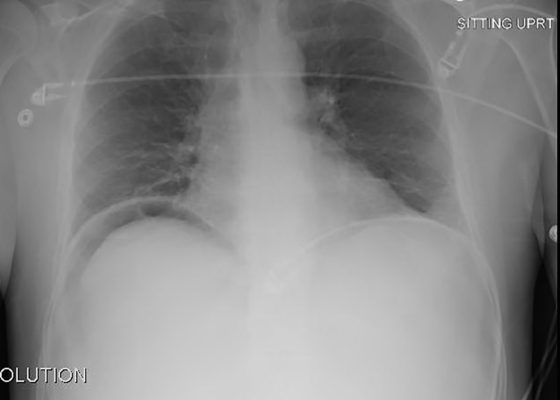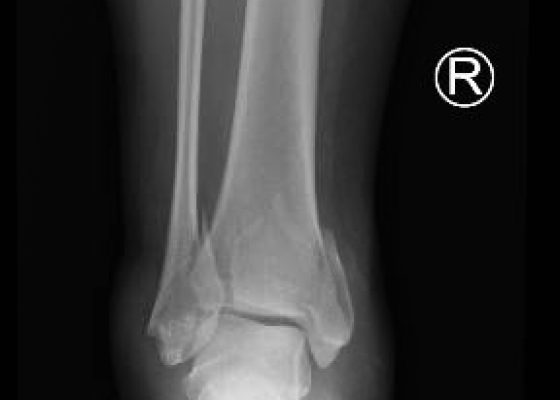Issue 1:2
A Formalized Three-Year Emergency Medicine Residency Ultrasound Education Curriculum
DOI: https://doi.org/10.21980/J8RG6HLearners will 1) know the indications for each the 11 ACEP point-of-care ultrasound (POCUS) applications; 2) perform each of the 11 ACEP POCUS applications; 3) integrate POCUS into medical decision-making.
Neutropenic Fever
DOI: https://doi.org/10.21980/J8KW2KNeutropenia is a common oncologic emergency, and it frequently develops as a result of myelosuppression from chemotherapy. Neutropenia is defined as absolute neutrophil count (ANC) <1000/mm3, with severe neutropenia being defined as ANC<500/mm3. Patients with fever and neutropenia should be presumed to have infectious etiology and started on antibiotics immediately. The 48-hour mortality associated with an untreated infection is 20%-50%.
The Acute Red Eye
DOI: https://doi.org/10.21980/J8BC74By the end of this educational session, the learner will: 1) list 10 major causes for an acute red eye; 2) describe historical features that help distinguish between benign and serious causes of the acute red eye; 3) describe physical examination features that help distinguish between benign and serious causes of the acute red eye; and 4) use historical and physical examination features to distinguish between the 10 different causes of the acute red eye.
Transfusion Related Emergencies
DOI: https://doi.org/10.21980/J86P4VAt the end of this didactic session, the learner will be able to: 1) list the various transfusion reactions and their approximate incidence; 2) understand the pathophysiology behind each transfusion reaction; 3) describe the management for each type of transfusion reaction; and 4) discuss the plan for prevention of future transfusion reactions.
Emergencies in Hemophiliacs
DOI: https://doi.org/10.21980/J8301WBy the end of this session learners will be able to: 1) describe the underlying deficiencies of hemophilia A and B; 2) discuss the complications of hemophilia; 3) formulate an appropriate treatment plan for an acutely bleeding hemophiliac; 4) calculate the appropriate factor dosing for a hemophiliac with acute bleeding.
Altered Mental Status: Epilepsy, Acute Psychosis, Intoxication or Delirium Tremens?
DOI: https://doi.org/10.21980/J8G592At the end of this simulation session the learner will: 1) Recognize signs and symptoms of delirium tremens (DT); 2) promptly treat DT with benzodiazepines and supportive care; 3) appropriately manage a patient with DT and effectively communicate with nurses and other team members during the resuscitation of an acutely ill patient.
Hill-Sachs Deformity
DOI: https://doi.org/10.21980/J8Z59D In the post-reduction film, there is a lateral depression in the humeral head (arrow, a Hill-Sachs deformity). A Hill-Sachs deformity is a cortical depression (fracture) in the humeral head that forms as the humeral head hits the glenoid rim during the dislocation.
Perforated Duodenal Ulcer
DOI: https://doi.org/10.21980/J8TG64In the chest radiograph, there was obvious free air under the both the right diaphragm (above the liver) and the left diaphragm, consistent with pneumoperitoneum.
Trimalleolar Fracture
DOI: https://doi.org/10.21980/J8PP46Anteroposterior (AP), lateral, and oblique x-ray views were obtained. The AP view revealed a displaced spiral fracture of the lateral malleolus (red) and a vertical fracture of the medial malleolus (blue). The lateral view revealed a displaced fracture of the posterior malleolus, tibial plafond (yellow), and the oblique view showed widening of the distal tibiofibular syndesmosis (green). CT scans confirmed trimalleolar fracture, annotated with the same colored lines (red, lateral malleolus; blue, medial malleolus; yellow, posterior malleolus).
Hyperkalemia on ECG
DOI: https://doi.org/10.21980/J8K017Initial ECG shows tall, peaked T waves, most prominently in V3 and V4, as well as QRS widening. These findings are consistent with hyperkalemia, which was promptly treated. Follow-up ECG post-treatment shows narrowing of the QRS complexes and normalization of peaked T waves.
1›
Page 1 of 2




